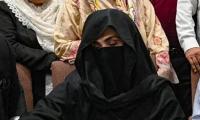Modi 2.0 is a journey which began as Modi 1.0. There are things which he has achieved and things still left to be done. The saffronisation of India is almost complete and Hindutva is their new nationalistic faith. The BJP so declares with 80 percent population of India coloured in orange robes and increasingly gravitating towards what is the new power phenomenon in a country of some 1.3 billion people. Any illusion of India’s secular claims must now be put to rest.
Many if not most Congress-ite intellectuals are making a beeline towards the new power pole in Indian politics. Of this reasons may be many but it is time to look around the world and notice how societies are rapidly transiting right on the ideological spectrum. It is a civilisational thing where political sentiment moves in cycles along the wide arc of time. In history now is such a moment. How it may impact other ideational societies should now be the next concern. Think Pakistan. But that is for another time.
Modi 2.0 won his party 303 Lok Sabha seats of the 542 that were in play. The Congress in comparison won only 52 seats; eight more than their 2014 tally. Modi’s electoral alliance, the NDA won 353 seats against Congress’ UPA which could muster only 95 seats. The third conglomeration of ‘others’ did as well as the UPA – except that it isn’t a unified political voice which makes it pliable to choosing one or the other side in the Lok Sabha issue to issue. Modi’s landslide was massive defying popular opinion around a perceived sentiment of threatened secularism which, now appears, has been overtly and declaratorily replaced by the BJP/RSS’ Hindutva, ultra-right Hindu nationalism.
Modi is only nine short of the pervasive two-thirds majority in the Lok Sabha which could empower him to bring about constitutional changes. Think Article-370 of the Indian constitution which entails special provisions to Kashmir’s autonomy, more than the regular states, and recognizes the unfinished business of deciding on its future. This is in line with what the UNSC ordained. India’s founding mentor Jawaharlal Nehru and the Kashmiri leader Shaikh Abdullah agreed to such transitional legal arrangement for Kashmir awaiting a plebiscite to decide Kashmir’s permanent status. The BJP has been wanting to annul the article. It has thus found permanence in the party’s manifesto and is central to Modi’s policy focus.
Though the current political leadership in Kashmir amounts altering the legal status to severance of all links between Kashmir and India, Modi 1.0 has been pursuing a deep-seated plan of strategic delinking of Kashmir from its legal, diplomatic and physical support base. First, the Simla Agreement of the fore had obviated international intervention in Kashmir by restricting the matter to bilateral consultation only for resolution – that effectively put the UNSC Resolution 47 seeking a plebiscite under the UN auspices on hold, if not entirely ineffective.
Next, following Mumbai 2008 India has been on a diplomatic offensive to desensitize global sympathy for Pakistan by framing and labelling Pakistan for terror in the region. Even when India itself may have been the trigger to an event it has successfully reversed the narrative to implicate Pakistan. India’s obtrusive resort to terror in Balochistan is well established but it is Pakistan that still must defend its position. Persistently and repeatedly India conflates acts of terror in Kashmir – even if indigenously rooted reprisal attacks by the Kashmiris against the excesses of the Indian state – as acts of terror sponsored or sourced in Pakistan. This mantra has hurt Pakistan and the Kashmiri cause.
Similarly, the world has been gradually desensitised to the established excesses of the Indian state in Kashmir. Using international instruments like the Financial Action Task Force (FATF) it has been a part of the effort to force Pakistan to relent on stonewalling action against its citizens for alleged support of the ongoing struggle in Kashmir. And, using international clout and leverage, it has exploited Pakistan’s financial vulnerability with verifiable list of actions long desired by India but now enunciated from international platforms with legal authority. To bring Pakistan to the point of voluntary disassociation from any semblance of active support to the Kashmiri freedom struggle is a success Modi will likely build on.
Modi’s renewed political capital enables him to fulfil the promise to dilute Kashmir’s special status if not fully eliminate it. Will he? Some of the constraints are: how does the Supreme Court of India view a basic foundational agreement between a representative Kashmiri leader and the state of India; is it a sovereign undertaking? Will the SC view it as a foundational structure of the Indian constitution which may not be tampered with? After all, the Indian SC was the first to formalize the concept of the basic structure.
Then, how will the Kashmiris react to such reneging by the Indian state and how will that reconcile with their aspiration of freedom? Will it unleash an uncontrolled spiral of violence and strife difficult to withhold in any reasonable limits? How will the Pakistani state react to it? Will such conspired mitigation of the Kashmir cause force Pakistan into shedding all restraints to jump into a potential inferno? That’s a lot to consider. It is thence possible that Modi will dilute rather than annul the article. Call it incremental incorporation of Kashmir into the union.
Article 35A of the Indian constitution amplifies the rights of a resident Kashmiri and protects those against any attempt at their dilution. Modi may find it easier to amend the article removing restraints for a non-Kashmiri to acquire property in Kashmir but will come across restrictions imposed by Article 51 of the J&K Constitution which defines a resident Kashmiri. So any such effort at engineering demographics in Jammu and Kashmir may entail supportive amendments both in the Indian Lok Sabha and the J&K Assembly. The latter doesn’t exist at the moment. What will a strong Modi win mean for politics in Kashmir? Will that encourage an assembly which seeks Modi’s favour because of his unrestrained power at the centre? If so, can a supportive J&K Assembly provide the necessary fillip to a declared Modi motive? Interesting dynamics will be at play whenever the next legislative assembly elections are held in J&K while the state of articles 370 and 35A will define the future security calculus of South Asia.
Modi will be toying with these thoughts in the days to come. It will not be easy, despite goading by the Indian establishment, to use the moment to legally wrangle Kashmir’s status. The risks in either option, annulment or dilution, are immense. It just may be a good toss to lose. In the meanwhile, if Ajit Doval continues to give company to Modi 2.0, it shall be another season of offensive-defence against Pakistan. Many disaffected areas will remain India’s focus to spawn further strife in Pakistan’s soft under-belly. Modi has his global agenda to pursue – that is where he has led India well – while Indian nationalism will buoy like never before. Buckle up. It will be another rough ride.
Email: shhzdchdhry@yahoo.com
Partnership between Pakistan and China in media and culture reflects shared commitment to strengthening bilateral...
This article focuses on single error committed by our respected judiciary which haunts me more than I would care to...
US still leads world in military spending and ability to project military power across globe
On July 3, UNGA adopted another resolution advocating for “free, open, inclusive” environment for AI development
Data, today, defines how we make decisions with tools allowing us to analyse experience more precisely
But if history has shown us anything, it is that rivals can eventually unite when stakes are high enough







